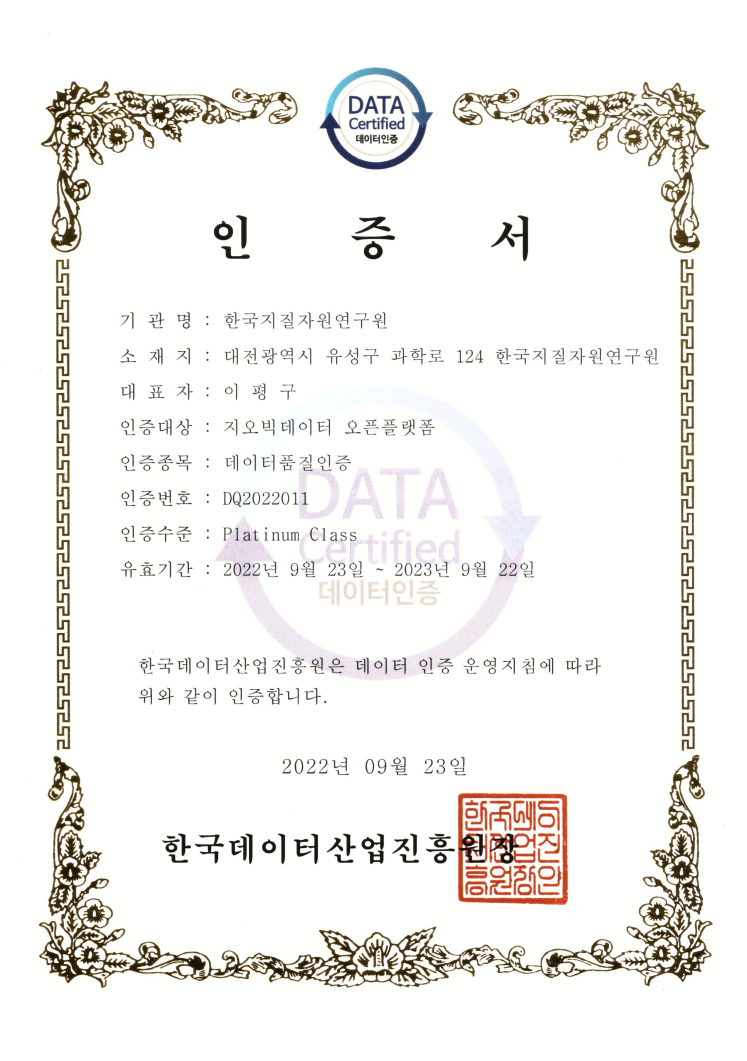광물자원 탐사를 위한 광상자료의 통합처리기술 및 신모델 개발 연구
상세정보
| 자료유형 | KIGAM 보고서 |
|---|---|
| 서명 | 광물자원 탐사를 위한 광상자료의 통합처리기술 및 신모델 개발 연구 |
| 저자 | 백상호 |
| 언어 | KOR |
| 청구기호 | KR-98-C-16-1998-R |
| 발행사항 | 韓國資源硏究所, 1998 |
| 초록 | This study intended to evaluate typical models on various ore deposit type in Korea, for the geological survey and prospecting. Five mines of three ore deposit types- vein, metasomatic and magmatic type - were selected for the study as below. ·Vein type : Mukeuk Mine (Gold-Silve). ·Metasomatic type : Janggun Mine (Lead-Zinc), Shinyemi Mine (Iron). ·Magmatic type : Konamsan Area, Soyeonpyeongdo Ore Deposits. (1) Mukeuk Mine: a) Economic minerals, which predominently consists of gold and silver, are included in the quartz veins with orientations of N10-15°W, in the coarse biotite granite, which is predominantly distributed in the mine area. b) The prominent ore vein is Nr.8 vein. The gold/silver is decreased according to the increase of pyrite content in the ore vein. c) The mine have been developed for last few tens of years up to 20 levels underground. The ore contents have a tendency to decrease in quality in depth. (2) Janggun Mine: a) There are three types of ore bodies in the mine area, i.e., lead-zinc-silver, vanadium and iron. At the present, only lead-zinc-silver ore bodies are developed. b) The lead-zinc-silver ore deposits is a hydrothermal metasomatic type, which developed in the contact zone of limestones and the Chunyang Granites. The main ore minerals consist of pyrite, magnatite, arsenopyrite, sphalerite and chalcopyrite. (3) Shinyemi Mine: a) The mine have two types of ore deposits, i.e., hydrothermal metasomatic ore deposits which developed at th contact zone of Makgol Limestone and igneous rocks, and cavity-filling type ore deposits. At the present, iron ore bodies are under development in the mine. b) The ore deposits have a zonal structure, which consists of three zones, pyroxene-garnet-hornblende zone, magnetiti-olivine-chlorite zone and magnetite-serpentine-chlorite zone, from the igneous rocks to the limestones. (4) Konamsan Area: The ore deposits developed in the gabbro in this area, comprising the titaniun-bearing magnetite ore bodies (Fe 46-48%, TiO₂ 17-18%). Other ore minerals produced in the ore bodies are hematite, sphene, chalcopyrite, pyrite and other sulfuric minerals. (5) Soyenpyeongdo Deposits: The ore deposits developed in the hornblend schist of the Precambrian. The ore bodies are divided into two parts, resulted from a NS fault movement which occurred after the development of the ore deposits. The ore bodies consist of magnetite, titanomagnetite and hematite. The ore minerals, generally, have graunllar textures, comprising the grain size of 0.107-0.5㎛ |
| 페이지 | 171 p. |
| 키워드 | 광물자원, 탐사, 광상자료, 자료처리, 자료통합처리 |
| 원문 |
http://library.kigam.re.kr/report/1998/광물자원탐사를위한광상자료의통합처리기술및신모델개발연구.pdf |
유형별 보고서
- 825view
- 2download
- 관리자
- 한국지질자원연구원
- 등록일
- 1998-03-31
Share
Cite as
백상호. (1998). 광물자원 탐사를 위한 광상자료의 통합처리기술 및 신모델 개발 연구. 韓國資源硏究所.

댓글